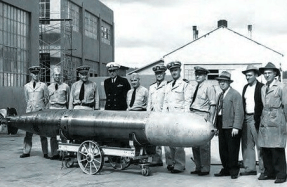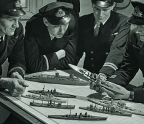
Eight miles north of the White Cliffs of Dover sits Deal, a picturesque resort town renowned for its pebble beach and classic Victorian buildings. Prewar visitors used to stroll along the beachfront promenade, grabbing an ice cream cone along the way. Others jumped into the bracing sea for a swim. On a clear day, beachgoers could see the coast of France, 25 miles across the English Channel. In June 1940 the frolicking came to a screeching halt after Germany attacked and occupied France. Deal’s storefronts were boarded up. The promenade was festooned with barbed wire. Concrete bunkers popped up along the beaches. Soldiers replaced the tourists.
It had been only a couple of weeks since the Germans had pushed French and British troops into the sea at Dunkirk. During the ensuing evacuation of nearly 340,000 soldiers, the British Army left behind massive quantities of weapons, including 1,500 artillery pieces, 600 tanks, and 60,000 assorted vehicles. Due to these losses Britain found itself, in a very real sense, unable to wage war. Worse yet, the British government faced the real possibility that the enemy would invade England in the early autumn, a plan the Nazis called “Operation Sealion.” (If the Wehrmacht knew how desperately depleted Britain’s arsenal was, they might have pushed up their timetable.) The defense of the realm was at stake, and the War Office frantically sought solutions to repulse the onslaught before the Germans could reach English soil. The powers-that-be came to believe the best way to deter the Germans was a stable of flamebased defensive weapons.


Britain’s use of fire in battle dates back centuries. The Royal Navy, for example, had utilized fire as a weapon in 1809 when they sailed flaming ships directly at Napoleon’s fleet, panicking the French and sending them scurrying away in such haste that they collided with one another or ran aground. The British again turned to fire as a weapon of war during World War I.
In 1914 Secretary of the War Council, Lord Maurice Hankey, conceived of a weapon that could be deployed






